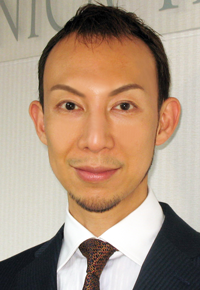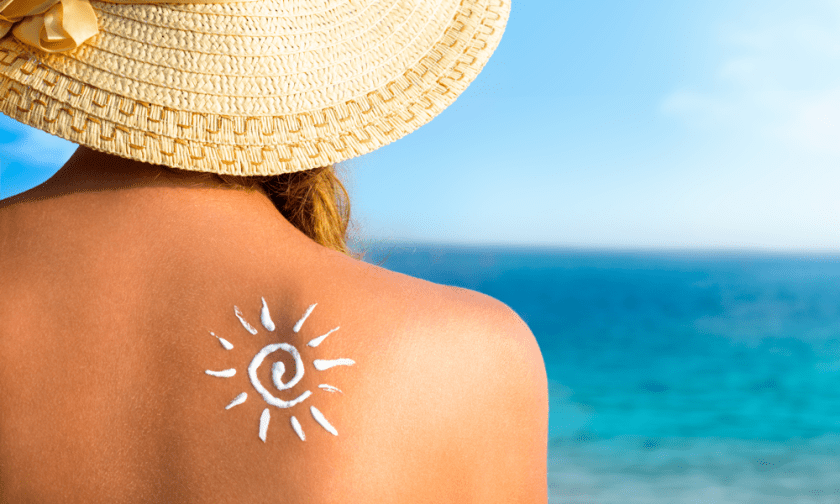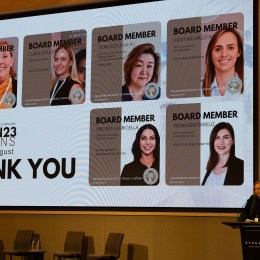Your clients likely received their skin cancer education the way several generations of Australians did – through a friendly seagull named Sid who, first seen in 1981, instructed you to Slip! (on a shirt) Slop! (on some sunscreen) Slap! (on a hat).
While these principles are just as crucial today and always will be, we are entering a new age of sun protection awareness to minimise the risk of developing skin cancer and reduce – but ideally prevent – the incidence of photo-ageing.
As attendees heard at the annual Cosmetex conference (that started yesterday, September 14, at The Hilton, Sydney and concludes on Saturday) it is an approach that goes way beyond using a high SPF.
Indeed, the process needs to begin from within, as discussed by leading New York dermatologist Dr Neil Sadick.
ANTIOXIDANT ARMOURY

Free radical damage to cells – caused by factors such as genetic predisposition, exposure to UV rays and environmental toxins – is a primary cause of accelerated skin ageing. And, of course, the development of skin cancers.
Free radicals can cause damage to parts of cells such as proteins, DNA and cell membranes by stealing their electrons through a process called oxidation. This is why FRD is also called “oxidative damage”.
An analogy often used to describe the havoc it wreaks is what happens when an apple is cut open and left exposed to the air – its flesh goes brown, or “rusts”, and rapidly rots.
And the most effective remedy we know to date is the use of antioxidants; substances that can remove potentially damaging oxidising agents in a living organism.
Yes, we’ve been hearing about free radical damage and antioxidants for many years and it has been used to drive the sales of many a skincare product with ingredients designed to fight FRD.
But according to Dr Sadick, what protection we apply TO the skin is not nearly enough.
The skin needs internal armour, as it were – and we all need to become a lot much more conscious of that.
“I tell all my patients they must up their oral intake of antioxidants,” says Dr Sadick. “Things like vitamins C and E and, a favourite of mine, resveratrol [derived from red grapes].”
Dr Sadick also mentioned a brand called Heliocare, that SPA+CLINIC was previously unfamiliar with; antioxidant-rich sunscreens and oral protection with capsules derived from Plypodium Leucotomos extract (PLE) – Samambaia, a native aquatic plant from South and Central America that has been used throughout history as a natural remedy for skin problems.
DNA DEEP

Although not at Cosmetex this year, Dr Ronald Moy, renowned scientist, researcher, dermatologist, Beverly Hills cosmetic surgeon and founder of DNA Renewal skincare, has presented numerous times at conferences in Australia on the subject.
He says our focus must remain on the prevention of sun cancers but also to better understand the broad spectrum of this damage.
“We have really matured in our messaging when it comes to talking about skin cancer prevention,” Dr Moy says.
“How we talk to clients about using sunscreen, the language we use, has become even more important than the product itself.
“If salons, spas and clinics focused on skin health as much as selling services we’d be in a much better place when it comes to prevention of skin cancers [and photo-ageing].
“We want to encourage good nutrition, by eating a diet rich in fruit and vegetables, look to laser resurfacing techniques for sun damaged skin, and take up the use of DNA repair enzymes that address the complex changes cells undergo when they are attacked with UV and oxidative stressors.”
Dr Moy says the hardest concept to get across is the DNA damage aspect of molecular biology, and that skincare which helps the body’s own cells repair DNA damage is the new tidal wave of advanced skincare technology.
Dr Moy suggests that SPF alone should not be the only criterion for choosing a sunscreen.
“We should encourage [patients/clients] to use sunscreen containing both UVB and UVA filters, as SPF is a poor indicator of how well it protects against UVA-induced DNA damage.
“SPF can give clients a false sense of security. It’s not a shield and we do not know how effective it is likely to be on skin that has already suffered skin cell damage,” he stresses.
So regardless of what labelling changes sunscreens may undergo in the future (and that could mean doing away with SPF altogether, says Dr Moy), client education remains a top priority.
- Further reading: Skin Cancer Prevention: Current Modalities and Future Implications; Telia DeBoyes, David M. Ozog, MD, and Ronald L. Moy, MD. Federal Practitioner, May 2010, pp40-44.
RED ALERT

Dr Yohei Tanaka, one of Japan’s leading plastic surgeons and founder of the International Photobiological Society in Melbourne, was a keynote speaker yesterday at Cosmetex, with a focus on the necessity of solar near-infrared (NIR) protection.
“The need to overcome sunlight (UV and NIR) arose for the first time
when primitive life developed on land.
“Studies have showed that NIR may damage skin collagen content via an increase in MMP-1 activity in the same manner as is known for UV radiation.”
Through intensive photobiological research, Dr Tanaka discovered the various biological effects of water-filtered broad spectrum near-infrared (1000-1800 nm together with a water-filter that excludes wavelengths 1400-1500 nm) including anti-cancer effects.
Dr Tanaka has edited international open access books entitled Breakthroughs in Melanoma Research and Photomedicine: Advances in Clinical Practice.
He has published over 30 peer-reviewed papers regarding near-infrared, and is now particularly specialising in the investigation of a potential application of specific near-infrared wavelengths for anti-cancer therapy and significance of protection from solar near-infrared.
At Cosmetex, Dr Tanaka has been urging Australian doctors to collaborate with him on a range of uber UV-protective eyewear [as NIR has been shown to have deleterious effects on the eyes/vision] and clothing.
BEWARE THE BLUE LIGHT!
A sinister new skin foe is emerging: High-Energy Visible (HEV) rays emitted by the screens that we all spend hours each day staring at.
Researchers have discovered that the blue light emitted from smartphones, tablets, laptops, desktop monitors and TV could be more damaging to skin than UVA and UVB rays from the sun, and even penetrate skin deeply enough to affect DNA.
“We probably spend more time in front of a screen than under the sun now,” according to The Future Laboratory‘s Beauty Futures Report.
“You can’t even get into a taxi now without being in front of a screen. Simply offering SPF in products won’t cut it any longer.”
The report nominates French skincare brand Dr Sebagh (created by Dr Jean-Louis Sebagh, acknowledged as one of the premier cosmetic doctors in Europe; much sought-after by celebrities such as Cindy Crawford) as having formulated the first day cream to contain a unique melanin compound designed to protect against HEV rays.
Says Megan Manco, SkinCeuticals skincare Scientific Director: “There are a multitude of things that are harmful to our skin, from UV rays to a bad diet, but there are two predominant issues that have come to the fore this year: pollution and blue light from electronic devices.
“Environmental impurities, like ground level ozone (O3) pollution, have been shown to cause signs of premature ageing.
“Pollution levels have never been higher, and this is having a significant impact on our skin. It causes damage to the skin in various ways such as weakened antioxidant defences at the surface, increase in dehydration, increase in sebum production and more.
“Skin damage due to ozone exposure is mainly mediated by its ability to induce oxidative stress. More specifically, exposure to ozone pollution (O3 – such as from driving in peak hour traffic and living in big cities) has been shown (in vivo) to oxidise lipids, deplete skin’s natural antioxidant reservoir, activate inflammatory pathways, and cause collagen degradation.
“There are, therefore, longterm effects from pollution on the skin. The compounded effect of ozone-induced oxidative stress leads to accelerated signs of skin ageing including appearance of fine lines and wrinkles, loss of radiance, skin laxity, as well as diffuse and localised pigmentation.”
Megan says SkinCeuticals’ latest study (due for publication in the Journal of Investigative Dermatology) has shown that topical vitamin C formulations, such as SkinCeuticals’ C E Ferulic or Phloretin CF can have a highly protective effect, significantly reducing the oxidative damage caused by O3 exposure.
“Antioxidants not only provide advanced environmental protection but are also clinically proven to improve the appearance of fine lines, wrinkles, and promote a naturally even skin tone by neutralising free radicals.”
- Cosmetex is the largest annual cosmetic surgery and medicine conference in Australasia and is being held this year from Thursday, September 14 – Saturday September 16 at The Hilton, Sydney it is hosted by the Australasian College of Cosmetic Surgery (ACCS).




